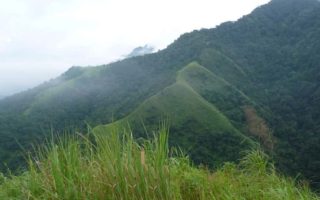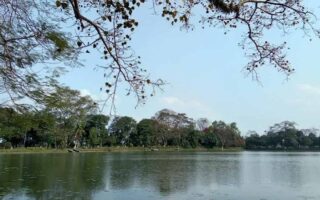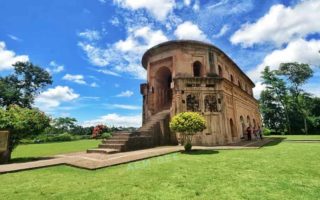The national parks in India are famous for the variety of flora and fauna. These parks serve as a natural habitat to all the species of plants and animals and allow the human beings to take a peek into the life of animals from a closer distance. With the plush greenery and the varied landscapes, these parks also become a preferred destination of tourists who want to take a break from their life in the crowded and chaotic environment of the city and rest in the lap of nature to rejuvenate their senses. Kaziranga National Park of Assam serves both the purposes and keeps the tourists enthralled with the sightings of some of the most popular and unique plants and animals that are present in very few places in the world.

Location
The Kaziranga National Park shares its boundaries with the Nagaon and Golaghat district of Assam. The closest city to this park is Jorhat. A few legends are associated with the naming of this area as Kaziranga. One legend states that a boy named Kazi and a girl named Ranga fled from their homes after their families did not accept their relation. They were never found despite several attempts of both the families and villages, and thus the village was named as Kaziranga.
Another legend goes that the Kazi and Rangaiwere a childless couple who lived in the village in the sixteenth century. The couple was blessed by SrimantaSankardeva, a saint, who instructed them to dig a pond which would mark their lives for the time to come.
History
Kaziranga got the identity of being a protected area after Lord Curzon’s wife Mary Victoria Leiter Curzon visited the park area in 1904. She was searching for a rhinoceros, but could not find one despite the area being popular for rhinoceros sightings. She spoke to her husband about this issue and persuaded him to implement measures that would help to preserve the wildlife in the area. By 1905, the Kaziranga Proposed Reserve Forest was established. The reserve occupied an expanse of 232 square kilometres. The park area was extended to another 152 square kilometres in a span of three years from the date of establishment. The designation of a reserve forest was approved in 1908. In 1916, it became the Kaziranga Game Sanctuary and continued to be called by this name till 1938, when hunting was no longer allowed and the gates were opened to the visitors.
In 1950, the name of Kaziranga Game Sanctuary was changed to Kaziranga Wildlife Sanctuary, as a forest conversationalist named P.D. Stracey was of the opinion that the earlier name highlighted the park as a hunting ground. The Assam Rhinoceros Bill was passed by the state government in 1954, which stated that heavy penalties will be passed on poachers caught by the authorities. The Kaziranga Wildlife Sanctuary was finally designated as a national park in 1968 after the “Assam National Park Act of 1968” was passed by the state government the central government gave the park its official status six years later. UNESCO declared the park as a World Heritage Site in 1985. It was also designated as a Tiger Reserve in 2006.
A lot of calamities initiated by nature and humans have caused damage to the park by affecting the normal movement of animals and also destroying their habitats by encroaching the land. Still, the authorities have managed to maintain a perfect ecological balance in the park area. The forest department’s wildlife wing has been assigned the task of administering and maintaining the wildlife of the park. The park has been divided into four sections for the ease of managing the wildlife. The funds that are invested in the administration of the park are received mainly from the state government, central government and also from the Ministry of Environment and Forests. The central government also provides additional funds through the Project Elephant. Donations are also received from the World Heritage Fund and other national and international organizations.
Structure
The length of the park is around 40 kilometres, while the breadth is close to 13 kilometres. Earlier, the park occupied a total expanse of 430 square kilometres, out of which 51 square kilometres was eroded with time. The lowest peak from the ground is at 40 metres, while the highest peak stands 80 metres from the ground. The Brahmaputra river surrounds the park at its north and east boundary. To the south of the park is the Mora Diphlu River, a water stream originating as a tribute from Diphlu River.
Most of the flatlands of the park are formed of alluvial soil and the slit carried by the river Brahmaputra. Almost 5% of the total park area is covered by beels (a pond like water body), sandbars, and other elevated areas, which provide shelter to the wildlife at the time of floods. These areas are called Chapories. The Indian Army and park authorities have created many artificial Chapories in addition to the natural ones. The park is known as a biodiversity hotspot, as a wide range of plants and wildlife species are found here.
What to See
The park is home to a large number of One-Horned Rhinoceros, Sambars, Eastern Swamp Deer, Indian Muntjacs, Wild Asiatic Water Buffalo, Indian Tigers, Jungle Cats, Bengal Fox, Golden Jackal, Hylopetes, Indian Gray Mongoose and many other wildlife species. Several birds and vultures are also seen in the park area, apart from reptiles, fishes and almost all other forms of wildlife present on earth. The flora of the park is dominated by four types of vegetation. Thick evergreen forests, tall grasses, shrubs, aquatic floras, etc., are found in the park.
You can opt for a mahout guided tour or go for a drive in a jeep or a four wheel drive vehicle to explore the park area. You should book the rides in advance to avoid any inconvenience upon your arrival. Tourists can also bring in their private vehicles provided that they are accompanied by an official forest guide.
Eat, Drink, Collect
Food and beverages are served mostly at the tourist lodges, as there are only a handful of outlets in the area. You can buy alcoholic beverages from the many liquor shops in the area. Accommodation is also available outside the boundaries of the park. Several private resorts have opened up owing to the increasing number of tourists.
Tourists can purchase local handicrafts and several other products related to the national park from the shopkeepers and roadside vendors at a reasonable price. Bargaining is recommended, as it might help you to save a few bucks.
Best Time to Visit
The best time to visit the Kaziranga National Park is between the months of November and April. It is usually closed from mid-April to mid-October as the monsoons act as a deterrent for the tourists. An entry fee of Rs.250/- per person has to be paid for getting inside the park. Tourists are also required to pay for using still and video camera in the park premises.
How to Reach
The closest airport is at Jorhat, which is at a distance of approximately 100 kilometres from the park. The closest railway station is situated at Furkating, at a distance of around 80 kilometres. Regular buses and private vehicles are available from both these cities. Tourists coming from Guwahati can opt for a bus ride to Kaziranga. Both private and government operated buses are available from this town at varied rates.


